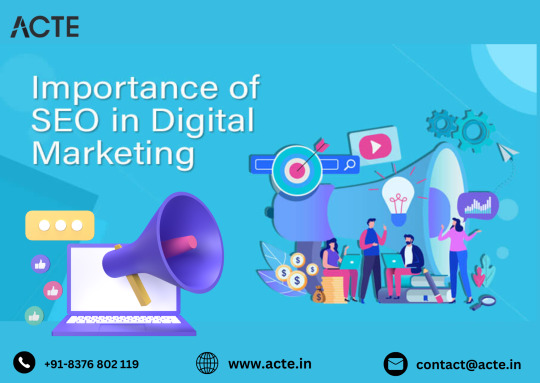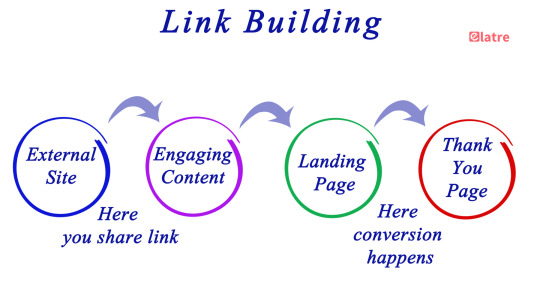#xml schema
Explore tagged Tumblr posts
Text
Unleashing the Power of SEO: Your Roadmap to Explosive Organic Traffic

Forget paid advertisements that vanish the moment your budget dries up. SEO is about building a sustainable foundation for long-term growth. It's the art and science of optimizing your website to rank higher in search engine results pages (SERPs) like Google, Bing, and DuckDuckGo for relevant primary keywords and related secondary keywords. Think of it as making your website irresistible to search engines, so they naturally present it to users actively searching for what you offer.
Why Organic Traffic Reigns Supreme
Organic traffic, unlike paid traffic, comes from users who have actively searched for information related to your business. This inherent intent makes them highly qualified leads with a greater potential for conversion. Imagine someone searching for "best sustainable coffee beans" – if you're a coffee roaster specializing in ethically sourced beans and your website ranks for this primary keyword, you're connecting with someone already interested in your niche.
Furthermore, the trust associated with organic results is significant. Users tend to perceive websites ranking organically as more credible and authoritative than paid advertisements. Consistent visibility in organic search results builds brand trust and recognition over time.
The Pillars of a Robust SEO Strategy
So, how do you harness the power of SEO to drive this valuable organic traffic? It boils down to a multi-faceted approach encompassing several key areas:
Keyword Research: The Foundation: Every successful SEO strategy begins with understanding what your target audience is searching for. This involves identifying relevant primary keywords – the core terms directly related to your products or services (e.g., "online yoga classes," "custom leather wallets") – and secondary keywords – longer-tail phrases and related terms that capture more specific user intent (e.g., "beginner yoga classes online for stress relief," "handmade personalized leather wallets for men"). Tools like Google Keyword Planner, SEMrush, and Ahrefs can help you uncover these valuable terms and analyze their search volume and competition.
On-Page Optimization(Making Your Website Search-Engine Friendly): This involves optimizing the elements within your website to align with your target keywords. This includes:
Compelling Title Tags and Meta Descriptions: These snippets appear in search results and act as your website's headline and brief description. Incorporating relevant primary keywords and enticing language encourages clicks.
Strategic Header Tags (H1-H6): Using header tags to structure your content logically and include relevant keywords helps search engines understand the hierarchy and importance of your text. For instance, an H1 might be "The Benefits of Using Organic Skincare," with H2s detailing specific benefits and incorporating secondary keywords like "natural anti-aging skincare products."
High-Quality, Keyword-Rich Content: Creating valuable, informative, and engaging content that naturally incorporates your target keywords is crucial. Focus on answering user queries and providing in-depth information around your primary keywords and related secondary keywords.
Image Optimization: Optimizing image file names and alt text with relevant keywords helps search engines understand the visual content on your page.
Internal Linking: Strategically linking relevant pages within your website helps distribute link equity and improves site navigation for both users and search engines.
Off-Page Optimization: Building Authority and Trust: This involves activities done outside your website to build its authority and reputation in the eyes of search engines. This primarily revolves around:
Earning High-Quality Backlinks: When other reputable websites link back to yours, it signals to search engines that your content is valuable and trustworthy. Focus on earning backlinks naturally through creating excellent content and outreach.
Building Brand Mentions: Even without direct links, mentions of your brand name on other websites can contribute to your online authority.
Social Media Engagement: While not a direct ranking factor, active and engaging social media presence can indirectly contribute to organic traffic by increasing brand visibility and driving referral traffic.
Technical SEO: Ensuring a Smooth User and Crawler Experience: This focuses on the technical aspects of your website that can impact its crawlability and indexability by search engines. This includes:
Website Speed and Mobile-Friendliness: Search engines prioritize websites that load quickly and are easily accessible on all devices.
Site Architecture and Navigation: A clear and logical website structure helps search engines crawl and understand your content effectively.
XML Sitemaps: These files provide search engines with a roadmap of all the important pages on your website.
Robots.txt: This file tells search engine crawlers which pages they should and shouldn't access.
Schema Markup: Implementing structured data markup helps search engines understand the context of your content and can lead to rich snippets in search results, improving click-through rates.
The Long-Term Rewards of SEO
Investing in SEO is not a quick fix, but rather a strategic long-term investment. By consistently optimizing your website for relevant primary keywords and exploring opportunities with secondary keywords, you can build a sustainable stream of organic traffic, attract highly qualified leads, enhance your brand credibility, and ultimately drive business growth.
So, take the first step today. Understand your audience, identify your key primary keywords and related secondary keywords, optimize your website, and embark on the journey of unlocking the immense potential of organic traffic. Your digital store front awaits its influx of eager visitors.
#Website ranking#Keyword research#On-page optimization#Off-page optimization#Technical SEO#Backlinks#Website visibility#Digital landscape#Target audience#User intent#Brand trust#Content optimization#Title tags#Meta descriptions#Header tags#Image optimization#Internal linking#Brand mentions#Social media engagement#Website speed#Mobile-friendliness#Site architecture#XML sitemaps#Robots.txt#Schema markup#Long-term growth#Qualified leads#Conversion
1 note
·
View note
Text
For once I’m doing a project way ahead of time. Turns out that means you can put it down for a week then open it up with fresh eyes rather than beating your head against the same wall for 8+ hours the night before it’s due. Good thing I’m done with grad school in a month so I never have to apply this lesson again.
#my stupid Baka XML object was not validating against the schema I wrote#but I fixed it with the powers of my brain and one week of playing rimworld and pretending to do my job instead of doing homework
1 note
·
View note
Text
https://digitalhabibi.com/the-role-of-technical-seo-in-improving-user-experience-and-search-rankings/
This comprehensive guide delves into the nuances of SEO and PPC strategies, helping businesses in Dubai navigate the dynamic digital landscape and choose the optimal approach for their marketing success.
#Technical SEO#website optimization techniques#SEO audit tools#mobile-friendly websites#website speed optimization#structured data markup#canonical tags#crawl budget#HTTPS implementation#schema markup SEO#XML sitemaps#site architecture SEO
0 notes
Text
@kathastrophen tagged me. Thanks
Rules: List five topics you can talk about for an hour without preparing any material, and tag five (or more) people!
1. Crime novels.
Why people categorising Agatha Christie and other (mostly female) writers from that era as cozy are wrong. Cozy genre conventions that baffle me. Top 10 cozy title puns. Cozies and Lokalkrimis. A comparison.
2. Irish Folk lyrics
My really obsessive phase was in my teenage years but I still have retained lots of useless knowledge
3. The Morseverse
I can't help that my interests are...not very varied. But once I found like four pages of Morseverse Meta on my hard drive that I had no memory writing. I am very into the books and all the shows. Even that one.
4. Theatre
Look. I'd mostly nerd out about my favourite productions but at some point I'd also put in a rant on how you can't complain about people not going to the theatre anymore/not watching classics, when half your productions are only comprehensible if you already know the source material.
5. XSLT/XML
Fun with namespaces in elements without prefixes. The surprisingly number of ways in which elements can be empty. Why homebrew schemas are a bad idea, especially if you don't understand XML
Would anybody want to hear this? No. I also don't particularly want to talk about it. But I could.
No pressure tag @khalaris @keep-calm-and-watch-spatort @the-thorster @katistrophe @rigatonifangemeinde
7 notes
·
View notes
Text
Oral Surgeon SEO Guide: How to Boost Your Practice Online

In today’s digital world, having a strong online presence is essential for any healthcare professional — and oral surgeons are no exception. Patients often turn to the internet when searching for specialized medical services, making SEO (Search Engine Optimization) a powerful tool to attract new clients. If you’re an oral surgeon looking to grow your practice, mastering SEO can set you apart from your competitors and help you reach more patients effectively.
This Oral surgeon SEO guide will walk you through the key strategies and tips to optimize your online visibility, generate quality leads, and establish your practice as a trusted authority in oral surgery.
Why Oral Surgeon SEO is Critical
Most patients begin their search for oral surgeons online. According to recent studies, over 80% of people use search engines like Google to find local healthcare providers. If your practice doesn’t appear on the first page of search results, you could be missing out on valuable patient inquiries.
SEO helps your website rank higher in organic (non-paid) search results for relevant keywords. This means when someone types “oral surgeon near me” or “best oral surgeon for wisdom teeth removal,” your practice is more likely to show up prominently, driving more traffic to your site.
Step 1: Keyword Research for Oral Surgeons
Keywords are the foundation of SEO. They represent the words and phrases potential patients use when searching for oral surgery services.
Start with Core Keywords: Use phrases like “oral surgeon,” “oral surgery,” “wisdom teeth removal,” “dental implants,” and “jaw surgery.”
Include Local Keywords: Patients often look for services “near me” or by city. Add location-based keywords like “oral surgeon in [City]” or “[City] oral surgery clinic.”
Use Long-Tail Keywords: These are longer, more specific phrases like “best oral surgeon for dental implants in [City].” They tend to have less competition and attract highly targeted traffic.
Tools like Google Keyword Planner, Ahrefs, or SEMrush can help identify popular and relevant keywords for your practice.
Step 2: Optimize Your Website for SEO
Your website is your digital storefront — it needs to be easy to find and navigate.
On-Page SEO
Title Tags & Meta Descriptions: Ensure every page has a unique title tag incorporating your main keywords. Meta descriptions should be compelling and concise to improve click-through rates.
Headings: Use H1, H2, and H3 tags strategically, placing your target keywords naturally within them.
Content: Provide detailed, informative content about your services, procedures, and patient care. Aim for clear explanations of common oral surgery treatments to educate visitors.
Images: Use high-quality images and optimize them with descriptive alt text that includes keywords.
Mobile-Friendly Design: Since many patients search on their phones, a responsive website design is critical for SEO and user experience.
Technical SEO
Site Speed: Slow-loading websites hurt rankings. Compress images and streamline your code.
Secure Website (HTTPS): A secure site builds trust and is favored by search engines.
XML Sitemap: Submit a sitemap to Google Search Console to help search engines index your site efficiently.
Schema Markup: Implement schema for healthcare providers to enhance search listings with rich snippets like reviews, contact info, and services.
Step 3: Local SEO for Oral Surgeons
Local SEO is vital because most oral surgery patients look for providers nearby.
Google Business Profile: Claim and optimize your Google Business Profile. Ensure your address, phone number, hours, and website link are accurate.
Local Listings: Get listed on local directories such as Healthgrades, Yelp, and Zocdoc. Consistent NAP (Name, Address, Phone) info across all platforms improves local ranking.
Local Keywords: Use geo-targeted keywords in your website content and blog posts.
Gather Reviews: Encourage satisfied patients to leave positive Google reviews. Reviews boost trust and local SEO rankings.
Local Backlinks: Partner with local healthcare providers or organizations to earn backlinks from their websites.
Step 4: Content Marketing & Blogging
Creating high-quality content regularly is a great way to attract and engage visitors.
Educational Blog Posts: Write about common oral surgery topics such as “What to Expect After Wisdom Teeth Removal” or “Benefits of Dental Implants.”
Patient FAQs: Address frequently asked questions in blog posts or dedicated pages.
Video Content: Consider videos explaining procedures or patient testimonials to build trust.
Share Content on Social Media: Promote your blog posts on platforms like Facebook, Instagram, and LinkedIn to increase reach.
Content helps target long-tail keywords and builds your authority in the oral surgery field, improving overall SEO.
Step 5: Build Quality Backlinks
Backlinks are links from other websites pointing to your site. They act like “votes of confidence” in Google’s eyes.
Professional Associations: Get listed on dental or surgical professional directories.
Guest Blogging: Write articles for reputable health blogs or local business sites.
Community Involvement: Sponsor or participate in local events and get coverage on local news websites.
Patient Testimonials & Case Studies: Publish success stories that others want to share.
Aim for backlinks from authoritative, relevant sites to boost your domain authority and rankings.
Step 6: Monitor and Improve Your SEO
SEO is not a one-time task but an ongoing process.
Track Performance: Use tools like Google Analytics and Google Search Console to monitor your website traffic, keyword rankings, and user behavior.
Adjust Strategy: Based on data, refine keywords, update content, and fix technical issues.
Stay Updated: SEO best practices evolve constantly, so keep learning about algorithm changes and new trends.
Common SEO Mistakes to Avoid for Oral Surgeons
Ignoring Mobile Users: A non-responsive site will lose patients and rankings.
Keyword Stuffing: Overusing keywords can harm readability and SEO.
Neglecting Local SEO: Without local optimization, you miss the majority of patient searches.
Poor Website Navigation: Complicated menus frustrate visitors and increase bounce rates.
Not Encouraging Reviews: Reviews are essential for trust and local ranking.
Final Thoughts: Why Oral Surgeon SEO Matters
For oral surgeons, the competition is growing, and patients have more choices than ever. Investing in a robust SEO strategy means your practice will be visible, credible, and accessible when potential patients are searching online.
youtube
This Oral Surgeon SEO Guide is your blueprint to building a strong digital presence — from keyword research and website optimization to local SEO and content marketing. By implementing these strategies, you can attract more patients, improve your reputation, and grow your practice sustainably.
Ready to take your oral surgery practice to the next level? Start optimizing your website today and watch your patient base expand!
2 notes
·
View notes
Text

Hey,
Are you searching for do Yoast,on page seo and technical seo of WordPress website with schema markup?
I'll do keyword research,on page seo for your pages & will optimize them with the top on-page skills with full settings to improve your website ranking in SERP. Congrats! You have come to the right place.
No more searching! I am an expert in WordPress: I'm an expert in Yoast,Rankmath,on page seo,WordPress, squarespace, wix & shopify who can boost your website's visibility on Google Top Ranking and increased your website speed.
What you'll get from my services:
Keyword Research.
On-Page Optimization.
Title tags and Meta-descriptions.
Header tags & schema markup
Content Optimization.
XML Sitemap Creation.
Speed Optimization.
Image Optimization.
All Plugin Setup.
Why Choose Me?
3 years of experience in that.
Lifetime 24/7 Support.
Client Satisfaction.
Transparent Communication.
Extensive Experience.
Customised Approach.
Proven Results.
To rank your WordPress website with rankmath and yoast,I ensured that you will get the best service from me.
Bonus: Free suggestions and gifts for you.
Feel free to inquire. Additionally, contact me for additional details.
DETAILS in below link:
https://www.fiverr.com/s/wR7oxr
#seo services#seo#search engine optimization#digital marketing#smm#search engine marketing#on page seo#off page seo#backlinks#technical seo#seo marketing#seo agency#best seo company#digital marketing services#seo company#google seo#yoast seo#wordpress seo#wix seo expert#smm services#guest post#social bookmarking
11 notes
·
View notes
Text
Best SEO tools
Yoast SEO Yoast SEO is a powerful WordPress tool that optimizes websites for better search engine performance, enhancing visibility and helping achieve higher Google rankings. It streamlines the SEO process, making it straightforward to increase site reach and ranking potential.
Key Functions of Yoast SEO
On-Page SEO Analysis Yoast offers real-time on-page SEO analysis, suggesting improvements for keyword density, meta descriptions, titles, and headings. This helps in refining content for better SEO.
Readability Analysis The Readability Analysis feature makes content more engaging and user-friendly by recommending improvements to sentence structure and paragraph length.
Meta Tags & Snippet Optimization Yoast allows you to create custom meta tags and snippet previews, boosting click-through rates by optimizing how your content appears in search results.
XML Sitemaps Yoast automatically generates an XML sitemap, helping search engines easily discover and index your site content.
Schema Markup This feature provides easy integration of schema types like articles, business info, and events, resulting in rich snippets that improve user engagement.
Canonical URLs Canonical URLs help manage duplicate content, which is essential for better indexing and SEO performance.
Breadcrumbs Control Yoast’s breadcrumb feature enhances navigation, lowers bounce rates, and improves SEO by organizing content hierarchy.
Social Media Integration By adding Open Graph Metadata, Yoast optimizes content for platforms like Facebook, LinkedIn, and Twitter, improving visibility and engagement.
WooCommerce WooCommerce is a versatile, open-source e-commerce platform for WordPress, ideal for all business sizes. It offers customizable online stores, secure transactions, and powerful SEO features to enhance product visibility.
Key Functions of WooCommerce
Easy Setup & Customizable Products WooCommerce’s user-friendly setup allows quick store launch, with options for digital, grouped, or physical products to suit varied customer needs.
Payment Gateway Integration Supports multiple payment types like credit cards, PayPal, and Stripe, providing a seamless checkout experience.
Inventory & Shipping Management Inventory tracking and flexible shipping options make it easy to manage stock and meet diverse customer demands.
Tax Management Automated tax calculations simplify compliance with location-based tax rates.
Extensions & Mobile-Friendly Design WooCommerce offers various extensions and themes for store customization, with a mobile-friendly design to ensure a seamless experience across devices.
Here’s a refined draft that highlights your team’s expertise, affordable pricing, and experience in Yoast SEO and WooCommerce. I’ve organized the information to reflect your strengths and service offerings in a client-focused format. Reach out to us by clicking here

#wordpress#web design#website#ecommerce website development#e commerce#web development#seo services#seo#digitalmarketing#smm#marketingtrends#emailmarketing#malware
2 notes
·
View notes
Text
Mastering SEO: A Comprehensive Guide to On-Page, Off-Page, and Technical Optimization
SEO stands for Search Engine Optimisation. It is the process of upgrading a website’s search engine visibility, including Google, Bing, and Yahoo. In other words, many activities focused on building a website all have a single goal of attracting more traffic via search engines. SEO aims to increase organic (non-paid) traffic to a website by ranking higher in search engine results pages (SERPs).SEO involves different techniques and strategies, including keyword research, on-page optimization, off-page optimization, and technical optimization
Types of SEO
on-page optimization
on-page optimization
technical optimization
What is On-Page SEO?
On-page SEO refers to optimizing individual web pages to improve their search engine rankings and earn more relevant traffic. These elements include
Quality Content: Quality Content is a term used to describe valuable, relevant, and engaging material that meets the searchers’ intention and adequately addresses their issues.
Keyword Optimization: Keyword Optimization is the method in which keywords are inserted strategically throughout the text. Keyword optimization includes both the post’s overview and headings, the body, and its most relevant elements like title tags and meta descriptions without repetition and keyword stuffing.
Title Tags and Meta Descriptions: Tags and Meta descriptions are Appealing headlines and summaries accurately that reflect the content of the page and encourage users to click through from search results.
URL Structure: Clean, and descriptive URLs containing relevant keywords to help search users and engines easily identify what the page is about.
Header Tags (H1, H2, etc.): Use header tags to structure content hierarchically and highlight important sections, while also incorporating keywords naturally.
Image Optimization: Images on a website should be optimized with descriptive file names and alt text which can help improve page load time and accessibility.
Internal Linking: Links on your website that direct users to another page on the website. It helps search engines crawl and index your website but also distributes link equity.
Page Speed: The speed of the site of the webpage is vital and can be achieved by optimizing code, compressing images, leveraging browser caching, and using content delivery networks among others. This is to make the loading of the site faster enough reducing the time taken to access the webpage.
Mobile-Friendliness: The webpage should allow its users to view easily on various devices such as tablets and smartphones. This can only be achieved when the webpage is designed and structured in a way that whoever views it can access data quickly
Schema Markup: The webpage should mark its structure in the form of a markup that will help the search engine to better understand the site’s structure and also the scope of what the content is about. This may make the search engines view it as rich snippets hence rankings.
What is OFF Page SEO?
Off-page SEO is any activity performed outside of a website to increase its search engine ranking and credibility. This encompasses the creation of backlinks from other high-ranking websites as well as social media promotion, influencer interaction, online PR, and other strategies to boost the website’s authority in the view of search tools. Key aspects of off-page SEO include:
Link Building
Social Media Engagement
Guest Blogging
Influencer Outreach
Content Promotion
Forum Participation
Directory Submissions
Social Bookmarking
What is Technical SEO?
Technical SEO. The goal of this approach is to boost a website’s ranking or messaging by improving technical aspects such as website speed, mobile-friendliness, secure HTTPS connection, XML sitemaps, structured data markup, canonical tags, etc.
Website Speed- Website speed can be achieved by optimising code, compressing images, browser caching , and content delivery networks (CDNs).
Mobile Friendliness- Website design and structure should enable it to be accessed in the best way possible to meet the needs of devices like smartphones and tablets.
Crawlability and Indexability- It should ensure that all web pages can effectively be crawled and indexed by search engine bots by eliminating crawl errors, using XML sitemaps, and implementing robots .txt directives.
Site Architecture- To make it easier for users and search engines to navigate, a site architecture that is normal and well-structured should try to set up with navigation menus, URL structure, and internal linking
HTTPS Security- Encrypting data between a user's browser and a website with HTTPS can ensure secure data transmission and improve search engine rankings.
Structured Data Markup- Adding schema markup to a website can provide search engines with more context about its content and result in rich snippets appearing in search results.
Optimized URLs- Creating descriptive, keyword-rich URLs that accurately reflect the content of the page and are easy for both users and search engines to understand.
XML Sitemaps- Creating and sending XML sitemaps to search engines gives them access to a thorough list of every page on your website, making it easier for them to find and crawl material.
3 notes
·
View notes
Text
Harnessing SEO's Potential in Digital Marketing: A Complete Handbook
In the realm of digital marketing, Search Engine Optimization (SEO) stands as a cornerstone strategy aimed at enhancing a website's visibility in search engine results pages (SERPs). This comprehensive approach involves optimizing various elements of a website to elevate its ranking in organic search results, thereby attracting more traffic and boosting its online presence.

Understanding SEO: A Holistic Approach to Digital Marketing
SEO comprises several key components, each crucial for achieving optimal results:
1. On-Page Optimization: At the core of SEO lies on-page optimization, which involves fine-tuning individual web pages to align with specific keywords and phrases. This process includes meticulous keyword research, crafting compelling meta tags (title and description), structuring headings (H1, H2), refining URL structures, optimizing images, and ensuring the quality and relevance of content.
2. Off-Page Optimization: Off-page optimization extends beyond the website itself and focuses on activities undertaken externally to enhance its search engine rankings. This entails building authoritative backlinks from reputable websites, engaging in social media marketing, conducting influencer outreach, and managing online reputation to bolster the website's credibility and authority.
3. Technical SEO: Technical SEO revolves around optimizing the technical aspects of a website to improve its crawlability, indexability, and overall user experience. This entails optimizing website speed, ensuring mobile-friendliness, fine-tuning site structure, implementing URL canonicalization, generating XML sitemaps, and incorporating schema markup to enhance search engine visibility.
4. Content Marketing: Content serves as the backbone of SEO, as search engines prioritize delivering relevant and valuable content to users. Content marketing involves creating high-quality, informative, and engaging content that addresses user intent and fulfills their needs and interests. This encompasses various formats such as blog posts, articles, videos, infographics, and more.

The Advantages of SEO in Digital Marketing
Embarking on an SEO journey offers several compelling benefits for businesses:
1. Increased Website Traffic: Optimizing a website for relevant keywords can significantly boost organic traffic from search engines. Achieving higher rankings in SERPs enhances visibility and exposes the website to potential customers actively seeking relevant products or services.
2. Enhanced User Experience: SEO involves improving various aspects of a website, such as page speed, mobile responsiveness, and overall usability, resulting in a superior user experience. A well-optimized website fosters user engagement, reduces bounce rates, and enhances conversions.
3. Cost-Effectiveness: Compared to paid advertising, SEO proves to be a cost-effective strategy for driving targeted traffic to a website. While it demands initial investments in time and resources, the long-term benefits of organic search traffic outweigh the costs associated with paid advertising.
4. Long-Term Sustainability: Unlike paid advertising campaigns, which cease to generate traffic once the budget depletes, the results of SEO efforts endure over time. With continuous optimization and maintenance, a website can sustain its rankings in search results and attract organic traffic consistently.
5. Brand Visibility and Authority: Securing higher rankings in search results elevates a brand's visibility and authority within its industry. Consistently appearing at the top of search results fosters trust and credibility among users, leading to increased brand recognition and loyalty.
In essence, SEO serves as a fundamental aspect of digital marketing, enabling businesses to enhance their online visibility, attract targeted traffic, and achieve sustained success in the competitive digital landscape. By optimizing their websites for search engines and delivering valuable content to users, businesses can strengthen their online presence, engage their audience, and drive tangible results.
#tech#training#digital marketing#digital marketing company#digital marketing course#email marketing#online marketing#search engine optimization#seo#seo services
3 notes
·
View notes
Text
Technical SEO Essentials: Elevating Site Structure and Performance

In the intricate world of search engine optimization (SEO), technical elements often play a decisive role in determining the success of your website. While content and keywords are essential, neglecting technical SEO can hinder your site's visibility and performance in search engine rankings. Let’s delve into the essential aspects of technical SEO, focusing on optimizing site structure and performance to enhance your online presence.
At the core of technical SEO lies the foundation of your website – its structure. A well-organized site structure not only improves user experience but also makes it easier for search engines to crawl and index your content. This begins with creating a logical hierarchy of pages, ensuring that each page is accessible within a few clicks from the homepage. By organizing your content into categories and subcategories, you can create a clear and intuitive navigation structure that guides users seamlessly through your site.
Moreover, optimizing URL structure is crucial for both users and search engines. Clean, descriptive URLs not only make it easier for visitors to understand the content of a page but also provide valuable signals to search engines about the relevance and hierarchy of your site. When crafting URLs, aim for simplicity, incorporating relevant keywords while avoiding unnecessary parameters or dynamic strings. Additionally, ensure that URLs are static and permanent, as frequent changes can lead to broken links and loss of SEO equity.
Another key aspect of technical SEO is optimizing website speed and performance. In today's fast-paced digital landscape, users expect websites to load quickly and seamlessly across all devices. A slow-loading site not only frustrates users but also negatively impacts search engine rankings, as page speed is a crucial factor in Google's algorithm. To improve site speed, start by optimizing images and multimedia content, compressing files, and leveraging browser caching. Additionally, consider implementing a content delivery network (CDN) to reduce latency and deliver content more efficiently to users around the world.
Furthermore, mobile optimization is no longer optional – it's essential for SEO success. With the majority of internet traffic coming from mobile devices, Google prioritizes mobile-friendly websites in its search results. To ensure your site is mobile-friendly, adopt a responsive design approach that adapts seamlessly to different screen sizes and resolutions. Test your site across various devices and use Google's Mobile-Friendly Test tool to identify and fix any issues that may arise.
In addition to site structure and performance, technical SEO encompasses a myriad of other factors that can impact your site's visibility and rankings. These include optimizing meta tags, implementing schema markup, and creating an XML sitemap to help search engines understand the structure and content of your site. By paying attention to these technical details, you can improve the overall health and crawlability of your website, ultimately boosting its presence in search engine results pages (SERPs).
Moreover, security is an increasingly important aspect of technical SEO. With cyber threats on the rise, Google gives preference to secure websites with HTTPS encryption. By installing an SSL certificate and migrating your site to HTTPS, you not only protect sensitive user data but also signal to search engines that your site is trustworthy and deserving of higher rankings.
In conclusion, technical SEO is a fundamental component of any comprehensive SEO service. By optimizing site structure, improving performance, and addressing technical details, you can enhance your website's visibility, user experience, and ultimately, its success in search engine rankings. So, if you're looking to elevate your online presence and drive organic traffic to your site, don't overlook the technical aspects of SEO – they could make all the difference. Are you looking to get your SEO off the ground? If yes then it is best to connect with the experts providing the best SEO services in Gurgaon.
5 notes
·
View notes
Text
Unlocking Digital Success: Link Building, Organic SEO, and Content Marketing

In the digital age, building a strong online presence and driving targeted traffic to your website are crucial for business success. This informative blog will explore three fundamental pillars of digital marketing: Link Building, Organic SEO, and Content Marketing. Understanding and leveraging these strategies can significantly impact your website’s visibility, authority, and overall performance in search engine rankings.
Link Building: Building Bridges to Online Authority
Link Building is a strategic process of acquiring hyperlinks from other websites to improve your website’s authority, relevance, and visibility in search engine results. Quality backlinks from reputable and relevant sources signal to search engines that your website is trustworthy and valuable to users.
Key components of effective Link Building include:
Content Creation: Producing high-quality, informative, and shareable content that naturally attracts backlinks from other websites.
Outreach and Networking: Building relationships with influencers, bloggers, and industry experts to secure guest blogging opportunities and collaborative content partnerships.
Social Media Promotion: Leveraging social media platforms to share content and attract natural backlinks from social media users.
Directory Submissions: Submitting your website to reputable online directories and industry-specific platforms to earn relevant backlinks.
Link Building efforts contribute significantly to improving domain authority, search engine rankings, and organic traffic, making it an essential component of a comprehensive digital marketing strategy.
Organic SEO: Optimizing for Search Engine Visibility
Organic SEO, or Search Engine Optimization, is the process of optimizing your website to rank higher in search engine results pages (SERPs) organically. Unlike paid advertising, Organic SEO focuses on improving your website’s visibility through strategies aligned with search engine algorithms and user intent.
Key elements of effective Organic SEO strategies include:
Keyword Research: Identifying relevant keywords and phrases that potential customers use when searching for products or services.
On-Page Optimization: Optimizing website elements such as meta tags, headers, content, and images to enhance relevance and crawlability.
Technical SEO: Addressing technical aspects like site speed, mobile-friendliness, schema markup, and XML sitemaps to improve user experience and search engine indexing.
Content Creation: Producing high-quality, informative, and engaging content that resonates with your target audience and encourages natural backlinking.

Organic SEO is critical for businesses looking to increase organic traffic, attract qualified leads, and establish authority and credibility in their respective industries.
Content Marketing: Engaging and Educating Audiences
Content Marketing revolves around creating and distributing valuable, relevant, and consistent content to attract and retain a target audience. This strategy aims to educate, entertain, and engage users, ultimately driving customer actions such as conversions, subscriptions, or brand loyalty.
Key elements of successful Content Marketing include:
Audience Research: Understanding your target audience’s demographics, preferences, pain points, and content consumption habits.
Content Planning: Developing a content strategy aligned with your business goals, target audience needs, and marketing objectives.
Content Creation: Producing high-quality, informative, and engaging content in various formats, including blog posts, videos, infographics, eBooks, and podcasts.
Content Distribution: Promoting content across multiple channels, such as websites, social media platforms, email newsletters, and online communities.
Performance Tracking: Monitoring content performance metrics, such as website traffic, engagement, conversion rates, and social shares, to measure effectiveness and make data-driven optimizations.
Content Marketing allows businesses to build brand awareness, establish thought leadership, nurture customer relationships, and drive customer actions, making it an integral part of a comprehensive digital marketing strategy.
Integration and Synergy: Leveraging Combined Strategies
While each of these strategies — Link Building, Organic SEO, and Content Marketing — offers unique benefits and advantages, their true power lies in their integration and synergy. When combined effectively, these strategies amplify each other’s impact, driving exponential growth and success for businesses.
For example, high-quality content created as part of a Content Marketing strategy can naturally attract backlinks, contributing to Link Building efforts and improving organic search rankings. Similarly, optimized website content and technical SEO enhancements support Organic SEO goals, improving website visibility and attracting organic traffic.
The Roadmap to Digital Excellence
In conclusion, mastering Link Building, Organic SEO, and Content Marketing is essential for businesses seeking digital excellence and long-term success. By understanding the nuances of each strategy, implementing best practices, and integrating them synergistically, businesses can achieve higher search engine rankings, increased organic traffic, improved brand visibility, and enhanced customer engagement.
As the digital landscape continues to evolve, staying updated with industry trends, algorithm changes, and consumer behaviors is crucial. Continuous learning, adaptation, and optimization are key to maintaining a competitive edge and driving sustainable growth in the dynamic world of digital marketing.
By harnessing the power of Link Building, Organic SEO, and Content Marketing, businesses can navigate the digital terrain with confidence, achieve their marketing objectives, and thrive in the ever-changing digital ecosystem.
2 notes
·
View notes
Text

🚀 Embark on an Advanced E-commerce SEO Roadmap! 🛒
Welcome to the extraordinary journey of advanced e-commerce SEO, where we unravel the secrets to elevate your online store's visibility to new heights. This roadmap is your enchanted guide to mastering the art of search engine optimization and ensuring your digital kingdom thrives. Let's dive into the magical realms of keyword exploration, meta mastery, and user experience marvels.
🌐 Keyword Exploration: In the vast sea of keywords, discover hidden gems that seamlessly align with your products.
📊 Meta Masterpiece: Craft captivating meta tags and descriptions infused with schema markup for a delightful feast for search engines.
🛍️ User Experience Marvel: Enchant visitors with a mobile-friendly design and swift-loading pages, pleasing both customers and algorithms.
🗺️ Navigation Wizardry: Guide search engine bots effortlessly with dynamic XML sitemaps and breadcrumb trails, ensuring an efficient crawl through your digital kingdom.
🌐 Content Alchemy: Conjure up shareable, link-worthy content to strengthen your site's authority and captivate your audience with irresistible magic.
📈 Analytical Insight: Peer into the mystical world of analytics tools to fine-tune your performance and uncover hidden opportunities.
🚀 Social Media Enchantment: Dance gracefully on the social media stage, cultivating a vibrant community around your brand and spreading the enchantment far and wide.
With this advanced e-commerce SEO roadmap, your online store is poised for a symphony of success. Happy optimizing!
🚀🔍 💬 Share your thoughts: How has SEO impacted your business? Comment below! 👇😊
#seo #business #ecommerceseo #SEO #DigitalMarketing #OnlineVisibility #TargetedTraffic #Conversions #BusinessGrowth #MarketingStrategy #SearchEngineOptimization #StayAhead #CompetitiveEdge #OnlinePresence #IncreaseVisibility #DriveTraffic #BoostRankings #BusinessSuccess #ChatGPT #aridradmx #AridraChandraDas
#seo#seonghwa#digitalmarketing#seo services#seo company#seo changbin#seo expert#searchengineoptimization#seo marketing#digital marketing
2 notes
·
View notes
Text

#_What_are_SEO audits, and how can they benefit my #_website?
An SEO inspection is a comprehensive analysis of a website's hunt machine optimization( SEO) rudiments and performance. The primary purpose of an SEO inspection is to identify areas of enhancement and give practicable recommendations to enhance a website's visibility, rankings, and overall performance in hunt machine results. SEO checkups can profit your website in several ways
Identify Issues An SEO inspection helps you discover specialized, on- runner, and off- runner issues that may be affecting your website's performance. This includes issues like broken links, indistinguishable content, slow runner lading, or indecorous use of markers and meta descriptions.
Ameliorate Rankings By relating and amending SEO issues, your website can perform better in hunt machine rankings. Advanced rankings can lead to further organic business, which is frequently largely targeted and precious.
Enhance stoner Experience A good SEO inspection considers not only search machines but also the stoner experience. By addressing issues like slow lading times or confusing navigation, you can ameliorate stoner satisfaction and reduce brio rates.
Optimize Keywords The inspection helps you assess your keyword strategy. You can identify the most applicable and precious keywords for your content and make sure they're meetly used throughout your point.
Competitive Analysis An SEO inspection can include an analysis of your challengers' websites. This can help you understand what they're doing right and where you can ameliorate to outperform them.
insure Mobile Compatibility With the adding use of mobile bias for web browsing, an inspection can help insure your website is mobile-friendly and performs well on colorful screen sizes.
Specialized SEO checkups look at specialized aspects similar as point speed, schema luxury, XML sitemaps, androbots.txt to insure hunt machines can crawl and indicator your point effectively.
Content Evaluation checkups frequently assess the quality, applicability, and structure of your content. This can help you produce a content strategy that attracts and engages your target followership.
Link Profile Analysis estimate your backlink profile to identify poisonous or low- quality backlinks that could harm your SEO sweats. You can also identify openings for erecting high- quality, authoritative links.
Measure Progress Regular SEO checkups allow you to measure the effectiveness of your SEO sweats over time. You can see how your website's performance is perfecting or if new issues have surfaced.
Compliance and Security checkups can also help identify security issues and insure your website complies with hunt machine guidelines.
To conduct an SEO inspection, you can use colorful tools and ways, including website dawdlers, keyword analysis, contender exploration, and on- runner and off- runner SEO analysis. numerous digital marketing agencies and SEO professionals offer SEO inspection services, or you can choose to perform one yourself if you have the moxie. Regular SEO checkups are essential for maintaining and perfecting your website's hunt machine performance and icing it meets the evolving norms and algorithms of hunt machines like Google.
#seotips#seo#seomarketing#seoagency#seostrategy#seoulkorea#uk#usa#canada#realestate#bdoutsourcing#bdoutsourcingnet#bdoutsourcingnt#websiteseoservices#Fiverr#upwork#digitalmarketing#facebookmarketing#facebookpost#adsonreels
6 notes
·
View notes
Text
Silent Marketing Tips and Tricks for Business Success

Introduction: In today's competitive business landscape, effective marketing is essential for success. While flashy advertisements and aggressive promotions can be effective, there's another, quieter approach known as "Silent Marketing" that can yield remarkable results. Silent Marketing involves subtle strategies that engage your audience without overwhelming them. In this comprehensive guide, we'll share 500 valuable Silent Marketing tips and tricks to help your business thrive.

Table of Contents:
Chapter 1: Building a Solid Foundation 1.1 Define Your Brand Identity 1.2 Identify Your Target Audience 1.3 Craft a Unique Value Proposition 1.4 Establish Clear Business Goals 1.5 Develop a Content Strategy 1.6 Optimize Your Website for Conversions 1.7 Leverage Social Proof 1.8 Understand Your Competitors 1.9 Monitor Industry Trends 1.10 Build Strong Customer Relationships

Chapter 2: Content Marketing 2.1 Create High-Quality Blog Posts 2.2 Develop Engaging Videos 2.3 Start a Podcast 2.4 Guest Post on Industry Blogs 2.5 Share User-Generated Content 2.6 Utilize Email Marketing 2.7 Write Informative Ebooks 2.8 Design Infographics 2.9 Host Webinars 2.10 Collaborate with Influencers

Chapter 3: Social Media Strategies 3.1 Choose the Right Social Platforms 3.2 Post Consistently 3.3 Use Eye-Catching Visuals 3.4 Engage with Your Audience 3.5 Run Contests and Giveaways 3.6 Share User Stories 3.7 Leverage Hashtags 3.8 Create Polls and Surveys 3.9 Showcase Behind-the-Scenes Content 3.10 Monitor Social Analytics

Chapter 4: Search Engine Optimization (SEO) 4.1 Optimize Your Website's Keywords 4.2 Create High-Quality Backlinks 4.3 Optimize for Mobile 4.4 Focus on Local SEO 4.5 Regularly Update Content 4.6 Improve Page Load Speed 4.7 Use Schema Markup 4.8 Create an XML Sitemap 4.9 Monitor Google Analytics 4.10 Invest in Voice Search Optimization

Chapter 5: Customer Engagement 5.1 Personalize Your Marketing 5.2 Listen to Customer Feedback 5.3 Offer Exceptional Customer Service 5.4 Implement Loyalty Programs 5.5 Encourage User Reviews 5.6 Provide Value Through Content 5.7 Showcase Customer Testimonials 5.8 Connect on a Human Level 5.9 Send Handwritten Notes 5.10 Surprise and Delight Your Customers

Chapter 6: Offline Strategies 6.1 Attend Industry Events 6.2 Network Effectively 6.3 Use Print Media 6.4 Collaborate with Local Businesses 6.5 Support a Cause 6.6 Sponsor Community Events 6.7 Offer Exclusive In-Person Experiences 6.8 Send Personalized Gifts 6.9 Speak at Conferences 6.10 Join Professional Organizations

Chapter 7: Measurement and Analytics 7.1 Set Key Performance Indicators (KPIs) 7.2 Use Google Analytics 7.3 Track Social Media Metrics 7.4 Monitor Email Campaigns 7.5 A/B Test Your Marketing Efforts 7.6 Analyze Conversion Rates 7.7 Study Customer Behavior 7.8 Review ROI Regularly 7.9 Adjust Your Strategies 7.10 Stay Informed About Marketing Trends

Conclusion: Silent Marketing is a powerful and strategic approach to grow your business. By implementing these 500 tips and tricks, you can create a marketing strategy that engages your audience quietly but effectively, ultimately leading to long-term success in your industry. Remember, success in marketing often comes from the combination of multiple subtle efforts, so be patient, adapt, and watch your business flourish.
#seo#digitalmarketing#digital art#seo marketing#seo services#marketing#blog#wordpress#social media#google analytics#keyword research
4 notes
·
View notes
Text
Mastering Organic Website Growth: A Comprehensive SEO Strategy
In the ever-evolving digital landscape, achieving organic growth for your website is paramount. To ensure your online business flourishes, I bring you a holistic approach that encompasses optimization, branding, and effective promotion. Let's delve into the steps that will elevate your website's presence and drive organic traffic:
1. Keyword Research and Analysis The foundation of any successful SEO campaign is thorough keyword research. By identifying relevant and high-ranking keywords, we align your content with what users are searching for, driving targeted traffic to your website.
2. Crafting Compelling SEO Titles and Meta Descriptions Crafting captivating SEO titles and meta descriptions not only boosts click-through rates but also informs search engines about your content's relevance, further enhancing your organic visibility.
3. Image Optimization and Streamlined Navigation Optimized images and seamless navigation enhance the user experience, reducing bounce rates and keeping visitors engaged. A well-structured website is favored by search engines and users alike.
4. Integration of Google Analytics and Webmaster Tools Incorporating these tools provides invaluable insights into your website's performance, enabling data-driven decisions to improve user engagement and organic ranking.
5. Content Optimization for Targeted Keywords Tailoring your content to the chosen keywords establishes your website as an authoritative source in your industry, making it more likely to rank higher in search results.
6. Competitor Analysis for Strategic Edge Analyzing your competitors' strategies helps us identify untapped opportunities and refine our approach, ensuring you stay ahead in the race.
7. XML Sitemaps and Robots.txt These components streamline search engine crawling, ensuring all your important pages are indexed and guiding search engines on how to navigate your site.
8. Leveraging Google My Business Connecting with local audiences is crucial for businesses. Through Google My Business, we'll enhance your online presence in local searches, drawing in nearby potential customers.
9. Crafting Custom 404 Pages A user-friendly 404 page can retain visitors who encounter broken links, giving them options to explore further rather than bouncing away.
10. Resolving Canonical Issues and Broken Links By resolving these technical issues, we improve user experience and help search engines understand your website's structure.
11. Optimizing Header Tags and Anchor Tags Strategic header tags and anchor tags not only make your content easier to read but also signal search engines about the content's hierarchy and relevance.
12. Implementing Schema Markup By adding schema markup, we provide search engines with additional context about your content, which can lead to enhanced search result displays.
13. Submission to Google and Bing We ensure that your website is promptly indexed by submitting sitemaps to major search engines, expediting the process of appearing in search results.
By collaborating on these strategies, we'll empower your website to flourish in the digital arena. To embark on this journey of exponential growth, Click here: https://www.upwork.com/services/product/marketing-on-page-seo-optimization-to-increase-ranking-and-traffic-1331218845747335168?ref=project_
#SEO#OrganicGrowth#WebsiteOptimization#DigitalMarketing#keyword#search engine optimization#backlinks#off-page seo#seo marketing#seo audit#onlinevisibility
3 notes
·
View notes
Text
What is seo?
SEO stands for Search Engine Optimization, which is the practice of improving a website's visibility and ranking on search engine result pages (SERPs).
The goal of SEO is to drive organic (non-paid) traffic to a website by making it more visible and relevant to search engine algorithms.
SEO involves various techniques, including keyword research, on-page optimization, off-page optimization, technical optimization, and user experience optimization.
Keyword research is the process of identifying the words and phrases that users are searching for related to a specific topic or industry. These keywords are then strategically incorporated into website content to increase visibility and drive targeted traffic.
On-page optimization involves optimizing individual web pages by including relevant keywords in meta tags, headers, content, and URLs. It also includes optimizing page load speed, mobile-friendliness, and user-friendly navigation.
Off-page optimization refers to the actions taken outside of the website to improve its visibility and authority. This includes link building, social media engagement, guest blogging, and influencer outreach.
Technical optimization focuses on improving the technical aspects of a website to enhance its performance and crawlability by search engines. This includes optimizing site structure, XML sitemaps, robots.txt file, and implementing schema markup.
User experience optimization involves improving the overall user experience on a website by ensuring easy navigation, fast load times, mobile responsiveness, and high-quality content.
SEO is an ongoing process that requires regular monitoring and optimization to stay competitive in search rankings. It is important to track and analyze key metrics, such as organic traffic, keyword rankings, bounce rate, and conversion rates, to make informed decisions and refine SEO strategies.
Example: Let's say you have a website selling organic skincare products. Through keyword research, you discover that "natural face moisturizer" is a highly searched term by your target audience. You can then optimize your website by including this keyword in your product descriptions, titles, and meta tags. Additionally, you can create informative blog posts and articles around this topic to attract organic traffic from search engines. By implementing various SEO techniques, you can increase your website's visibility, drive targeted traffic, and ultimately, boost sales.
2 notes
·
View notes